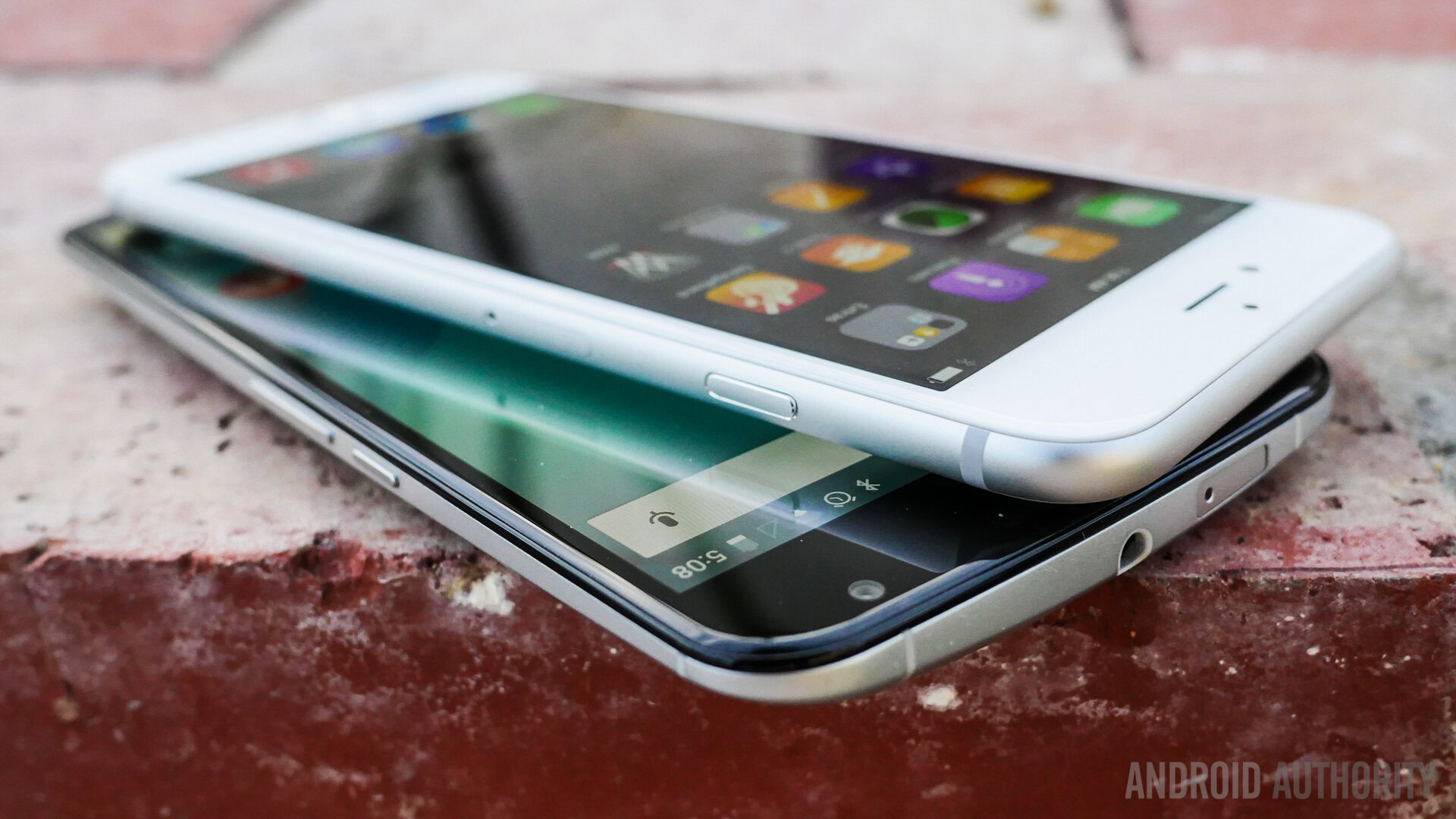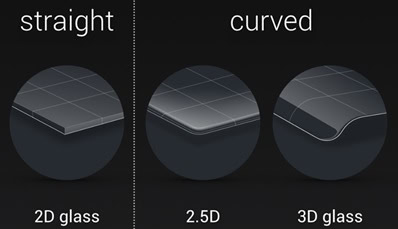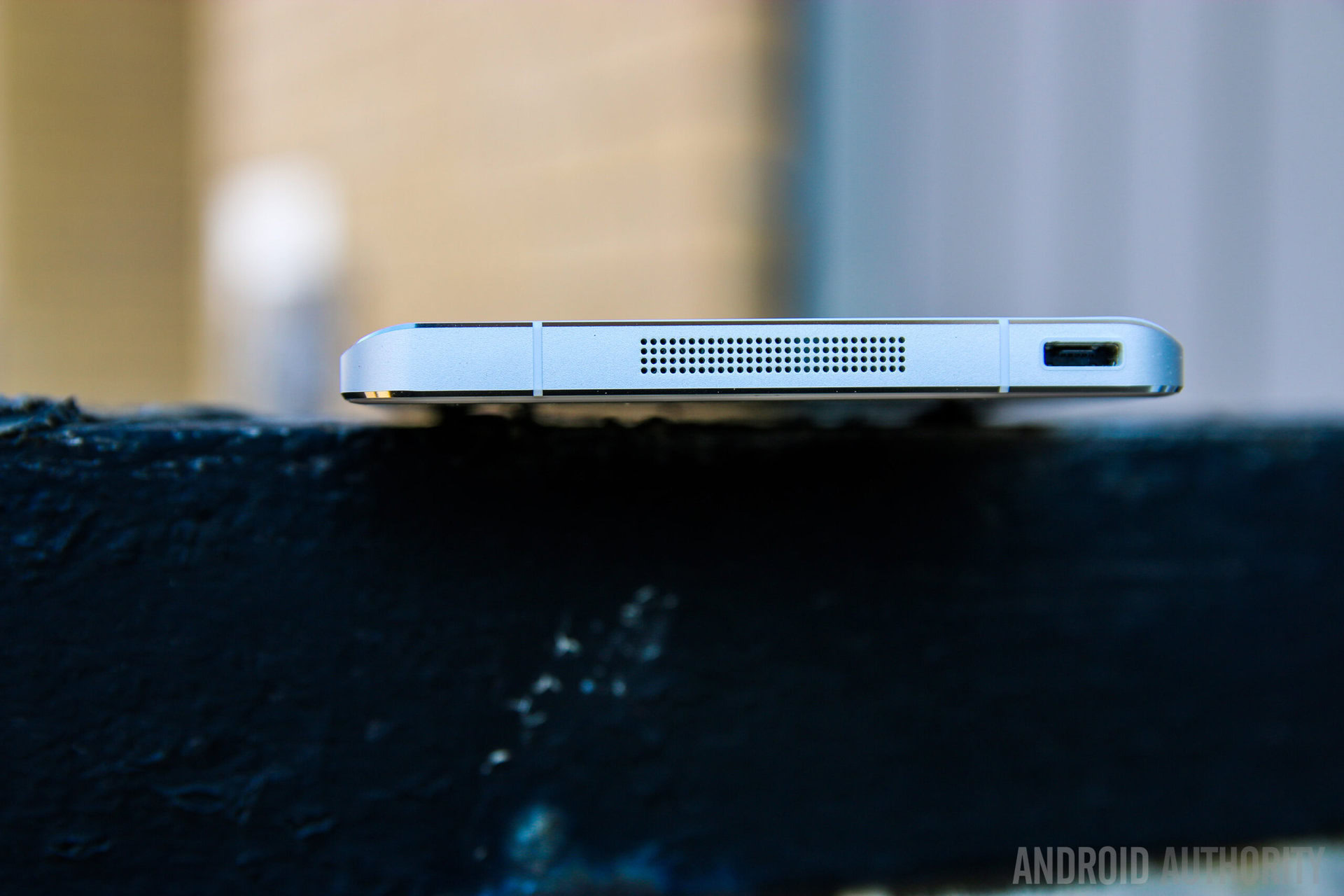Affiliate links on Android Authority may earn us a commission. Learn more.
Just what is 2.5D screen glass?

The 2.5D glass trend sounds like stereotypical marketing jargon… how can something exist between two and three dimensional space anyway? However, the term is actually based on a real design factor, it’s not just a name used to try and sell you semi-useless screen protectors.
2.5D refers to a slight curvature at the edge of the glass display, also known as a contoured edge. While not an official name for any piece of technology, it is widely used to reference this type of display design. You might not even really be able to notice it on some handsets, but on devices where the glass sits atop the rest of the body, rather than being secured behind a slightly raised bezel, you’ll certainly appreciate the more seamless edge.
A lot of phones have featured glass with some sort of curved edge over the years, but recently the design has become a much more prominent marketing term as handsets have tried to distinguish themselves based on aesthetic design. You can easily spot curved glass on modern handsets such as the Google Nexus 6, Xiaomi Mi Note, and now the Apple iPhone 6 too, just to name a few.
So, is it curved or not?
While not curved in the most obvious sense, the name refers to rounding off the edges of a flat “2D” display in the z-axis, adding a slight curve to what would usually be a straight edge. If you can’t quite picture this, a press slide from the launch of the Xiaomi Mi Note probably demonstrates the differences a little better than I can put into words.

This effect can be made more or less extreme, depending on how much of a curved edge is required. Even a small curve can be used to make the edge of the glass feel smooth, while a larger curve may look more stylish.
Going further and actually bending the display leads to a more noticeable 3D effect. This is probably how we would describe handsets like the G Flex 2 or Samsung’s Galaxy Note Edge and S6 Edge, but these curved displays rely on bendable substrates and electronics too, while 2.5D glass does not. That’s not to say that these type of displays don’t feature curved glass edges as well, but it’s important to make the distinction about the term, now that handsets feature more noticeably curved displays.
How is it made?
Although a lot of fuss has been made about 2.5D glass, there’s nothing particularly special about the way it is designed and built. Because the actual electronic display components are not curved in anyway, unlike a flexible display, 2.5D glass is manufactured in much the same was as a straight glass panel, just with some additional shaping added when it comes to forming the glass to the right size.
It's a little more expensive, but can produce more premium looking results.
Fortunately, this means that 2.5D displays can still benefit from hardening and strengthening manufacturing techniques, such as those used by Corning’s popular Gorilla Glass. Individual smartphone sized glass pieces are cut from the larger mother sheet, with an additional processing layer thrown in to trim and smooth the edges of the glass. It’s a little more expensive, but can produce more premium looking results.

The shaped glass can then be put through the hardening process, by heating the sheet in a solution of molten salts at very high temperatures and then cooling it rapidly to force the glass to compress. Shaping and hardening is done in this order so that the structural integrity of the stronger glass is not put at risk by attempting to reshape it nearer the end of the processes.
For comparison, a fully curved display like the G Flex 2 or Galaxy S6 Edge requires that the display’s transistor backplane and circuit light elements, such as the OLEDs or LCD pixels, also conform to the curve. Flexible electronic circuits like this are even more complex and expensive to produce than the curved glass component.
What are the benefits?
The benefits of 2.5D glass are purely ergonomic and aesthetic. It is especially important on touchscreen devices to ensure that any surfaces that consumers are going to touch and swipe their fingers across are smooth. You wouldn’t want to snag your finger on a sharp glass corner!
You’ll still find 2.5D displays used in products with a non-glass edge, simply because it helps keep the edge of the glass away from the user’s fingers. Remember that intentional gap between the Note 4’s body and its metal frame? It would have been a big deal if sharp glass was exposed by the gap.

In curved glass edge smartphones, 2.5D simply looks a little nicer than raising the bezel up above the display edge and helps to ensure that the glass fits nicely against the rest of the phone’s body.
2.5D has become a prominent marketing term as handsets have tried to distinguish themselves based on aesthetic design
As for toughness and scratch resistance, it’s the underlying manufacturing technique that determines these properties rather than anything inherent in the 2.5D name that specifies any such properties.
You’ll find that a number of Gorilla Glass handsets are also listed as 2.5D displays, but the two are separate terms. There’s also no reason to assume that these are any tougher or weaker than their regular flat glass counterparts. After all, it’s only the very edge of the display which is any different. 2.5D displays manufactured with a different process will result in different levels of toughness.
The only minor downside is that consumers who like to place an additional screen protector on their smartphone might find it difficult to find third party products that exactly fit the contours of the 2.5D glass. This is because the screen protector has to be manufactured to fit around the curves of the display, which is a trickier and more expensive process than producing a completely flat protector. You can find specific 2.5D screen protectors for these devices.
Overall, the term 2.5D display is not completely meaningless, but it’s not a major technical achievement that gives one phone an advantage over another either. A 2.5D display may lend itself to some nice looking designs, but it’s certainly not something to base your purchasing decisions on.